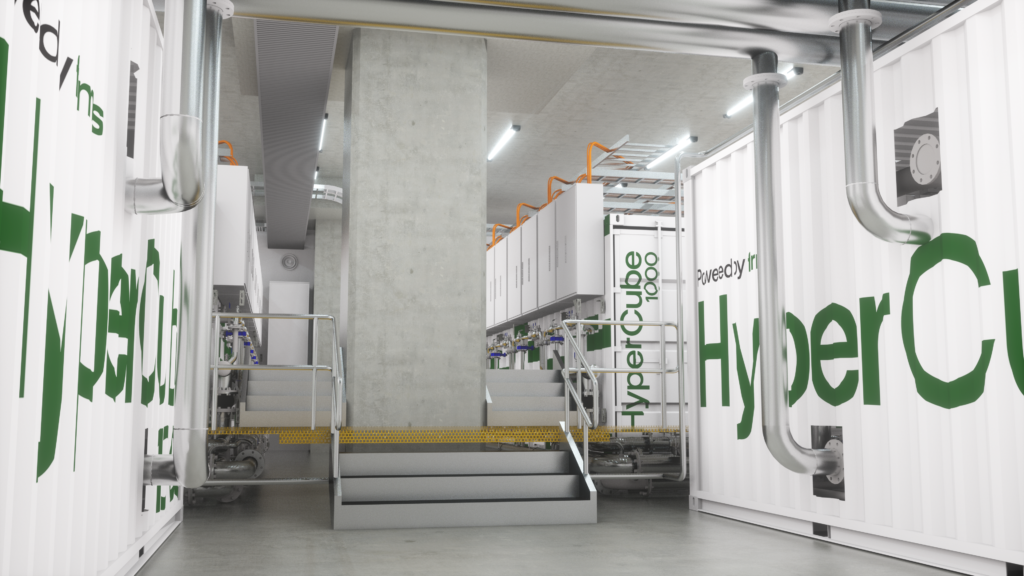
Singapore must increase the capacity of data centres so as to maintain and strengthen its tech hub status.
Dan Pointon, ST Telemedia Global Data Centres’ chief technology officer said data centres are a critical component of a digital economy as they provide reliable and secure data processing and storage services.
However, data centres are “hot”: they require a lot of energy water to run the computational equipment and cooling operations. The environmental impact is large.
Pointon believed that the two diametrically opposing issues can co-exist.
“Solving for sustainability on one hand yet maximising the computing yield from every watt of energy utilised will be key to unlocking the future,” Pointon said in a discussion with Deeptech Times.
Recognising that Singapore is a vital data centre hub, he cautioned that if the planned capacity in Singapore falls considerably below the regional demand, businesses maybe prompted to consider alternatives outside Singapore.
Neighbouring countries such as Malaysia and Indonesia, he pointed out, will find an opportunity to potentially reposition themselves as prime digital hubs in Asia, vying to establish their presence not only as key digital centres but also as AI hubs within the region.
Data centre companies understand the importance of green technology. STT GDC is launching a new data centre concept based on bare metal immersion cooling system in partnership with Australian company Firmus Technologies.
Called Sustainable Metal Cloud (SMC), the venture will soon launch a new GPU-centric service focussed on deep learning and visual computing workloads. It will deliver bare-metal-service access to high-performance AI clusters including GPUs and high-speed networking from Nvidia.
SMC will use Firmus’ immersion-cooled platform called the HyperCube, to deliver the service.
According to STT GDC, the HyperCube will have advanced cooling features that can extract up to 30 per cent further efficiency from the compute itself as well as lowering carbon dioxide emissions and at higher petaflops per watt.
STT GDC also plans to later expand SMC throughout Asia Pacific, the United Kingdom and Europe.
In the Q&A below, Pointon discusses the importance of data centres to support Singapore’ ambition to be a leading tech hub and the equally critical discussion of green technology for his industry.
Is there still opportunity for expansion of data centres in Singapore?
We believe that for Singapore to be future-ready, it is strategically important for the nation to attract and support high-performance computing workloads including artificial intelligence (AI), machine learning, deep learning, data science and high-capacity visual computing.
Singapore ended a three-year moratorium on data centre projects in 2022 and called for new applications with higher green standards. One condition is that the total allotted capacity is 60 megawatts per year while a recent report stating that Singapore needs aggregate capacity demand of over 3GW by 2030.
Singapore has firmly positioned itself as a vital digital hub in Southeast Asia. It is well-documented that vacancy rates in Singapore are amongst the lowest in the world due to the combined factors of increasing demand and constrained supply.
For Singapore to be future-ready, it is strategically important for the nation to be positioned now to attract and support high-performance computing workloads including AI, machine learning, deep learning, data science and high-capacity visual computing.
Access to adequate supply of digital infrastructure and the utility service provided by data centres, is just as important to a modern society, as access to coal and iron was to the industrial revolution.
This has prompted an upswing in demand for data centres. Although the precise scale might not reach the 3GW mark projection (as stated in the highlighted report), the trend is evident.
While the Singapore Economic Development Board (EDB) and the Infocomm Media Development Authority (IMDA) have provisionally awarded 80MW of new capacity, we remain optimistic given that both EDB and IMDA have stated their aim to allocate more capacity over the next 12 to 18 months. It is evident that considerably more capacity will be necessary to fully realise Singapore’s ambitions.
If Singapore does not meet industry needs for more capacity, what is the impact on Singapore’s status as tech hub?
In recent years we have observed a rapid uptake of data centre capacity across Southeast Asia (SEA) with the construction of facilities in areas like Jakarta; Johor and Bangkok. Whilst partly fuelled by in-country demand, this trend has no doubt been amplified by the moratorium in Singapore as other countries in the region step up to serve the unmet demand.
In the short term, this will result in a more de-centralised data centre industry across SEA versus most of the demand being met in the strategically important hub of Singapore. It remains to be seen what the medium-term impact will be on Singapore’s status as a tech hub and whether the strategic, economic, and national security benefits of a tech hub can be fully realised without sufficient physical data centre infrastructure in the country.
What are the recent innovations of STT GDC in data centre sustainability?
Last year our R&D team, based in our Singapore, kicked off initiatives related to emerging technologies that have an impact on the entire lifecycle of the data centre, from construction through its operational lifespan.
At the end of 2022, we undertook a feasibility study on the deployment of carbon dioxide mineralised concrete in data centre construction – essentially embedding recycled carbon dioxide into fresh concrete. Once injected, the carbon dioxide undergoes a mineralisation process and becomes permanently embedded. Even if the concrete is demolished, the mineralised carbon dioxide will never leak or return to the atmosphere. Using this technology, the casting of the concrete is in effect permanently removing carbon dioxide from atmosphere.
We are implementing AI within our data centre cooling systems. This effort led to an approximate 10 per cent cooling efficiency gain. We also commenced feasibility and performance trials for the use of Hydrotreated Vegetable Oil (HVO) as fuel in backup power generator sets as a low-carbon alternative to conventional diesel fuel. We are also studying fuel cell powered data centres in Singapore, as we look towards adapting green hydrogen as a critical fuel of the future.
Apart from the liquid cooling technology that Firmus provides, what other value does Firmus bring to the table?
Our partnership with Firmus zooms in on the need for future data centres to provide both exceptional performance and highly sustainable services at scale. The Firmus innovation is on the convergence of two elements: firstly, bare-metal Infrastructure-as-a-Service that caters to the exploding demand for deep learning AI and visual computing workloads through high-performance AI clusters powered by Nividia GPUs; and secondly, the use of scaled, immersion-cooling ideally placed to address the macro sustainability of the data centre sector. It is at this intersection of both elements that we believe will fundamentally change the way that all infrastructure operators are thinking about data centres as AI factories of the future.
Performance-wise, due in part to its advanced cooling features, SMC can extract up to 30 per cent further efficiency from the compute itself; in fact, we are forecasting an 8.5 times efficiency gain in Petaflops per Watt using the GPU platform compared to typical cloud-computing CPU type platforms.
Intensive research, development and focus over half a decade has yielded a solution that cuts energy use and corresponding carbon emissions for energy-intensive workloads significantly. The HyperCube technology operates within a sub 1.06 PUE envelope based on the innovative immersion cooling system.
The innovation is compelling as every watt of computing is generating significantly higher output and doing so while being cooled much more efficiently at the same time.
















